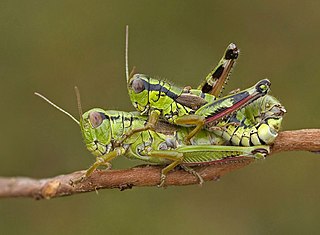 W
WAcridoidea is a superfamily of grasshoppers in the order Orthoptera with species found on every continent except Antarctica.
 W
WAeshnoidea is a superfamily of dragonflies that contains five families, one of which is extinct.
 W
WArchisargoidea is an extinct superfamily of brachyceran flies known from the late Middle Jurassic (Callovian) to early Late Cretaceous (Turonian). Most flies in the superfamily have large eyes and an elongated abdomen, preserved females have a sharp, piercing oviscapt used for injecting eggs into host matter. Their relationships with other members of Brachycera is controversial, they are usually considered close relatives of either Stratiomyomorpha or Muscomorpha. Internal relationships between the families are uncertain and the topology of the only cladistic analysis of the family was weakly supported.
 W
WBlattoidea is a superfamily of cockroaches and termites in the order Blattodea. There are about 17 families and more than 4,100 described species in Blattoidea.
 W
WCalopterygoidea is a superfamily of damselflies in the order Odonata. There are at least 20 families and more than 1,000 described species in Calopterygoidea.
 W
WCoenagrionoidea is a superfamily of closed wing damselflies of the order Odonata found worldwide. It contains six different families.
 W
WCorydioidea is a superfamily of insects in the order Blattodea, the cockroaches and termites. It contains two extant families, Corydiidae and Nocticolidae, comprising about fifty genera and two hundred and fifty species, along with the extinct family Liberiblattinidae. Members of this superfamily are found worldwide, mostly in hot, arid habitats.
 W
WEumastacoidea is a superfamily within the order Orthoptera. The family has a mainly tropical distribution. Some of the characters of the members of the superfamily are the lack of an abdominal tympanum, wings if present widen towards the tip, the antennae are short in some groups the hindlegs are spread out laterally at rest. The overall classification based on genitalic characters and the geographic distribution of the groups are as follows:Cryptophalli Family Chorotypidae Chorotypinae Asia, Southeast Asia, Central Africa Prionacanthinae Descamps 1973, India Erianthinae Southeast Asia, South Asia Eruciinae Burr, 1903 Southeast Asia Chininae Burr, 1903 China. Mnesicleinae Descamps, 1973 Indo-Malayan Archipelago Family Episactidae Episactinae Burr, 1903 Espagnolinae Rehn, 1948 (Hispaniola) Miraculinae I. Bolivar, 1903 Stenophalli. Family Morabidae Biroellinae C. Bolivar, 1930 - Australasia Morabinae Rehn, 1948 - Australia Family Eumastacidae Gomphomastacinae Burr, 1903 Central Asia Morseinae Rehn, 1948 Masynteinae Descamps, 1973, Cuba. Parepisactinae Dirsh, 1975 South America Eumastacinae Burr, 1903 South America Pseudomastacinae Dirsh, 1961 South America Paramastacinae Dirsh, 1961 South America Temnomastacinae South America Euphalli Family Mastacideidae Mastacideinae Rehn, 1948, S. India. Disclerophalli Family Euschmidtiidae Euschmidtiinae Rehn, 1948 -Africa, Madagascar, Seychelles Pseudoschmidtiinae Descamps, 1964 Madagascar, Comoros and mainland Africa Stenoschmidtiinae Descamps, 1973, Coastal East Africa Family Thericleidae (Africa) Afromastacinae Descamps, 1977 Barythericleinae Descamps, 1977 Chromothericleinae Descamps, 1977 Loxicephalinae Descamps, 1977 Plagiotriptinae Bolívar, 1914 Thericleinae Burr, 1899
 W
WGrylloidea is the superfamily of insects, in the order Orthoptera, known as crickets. It includes the "true crickets", scaly crickets, wood crickets and other families, some only known from fossils.
 W
WThe superfamily Hagloidea are insects belonging to the order Orthoptera: Ensifera; they are now represented by the extant Prophalangopsidae, with many extinct genera and families.
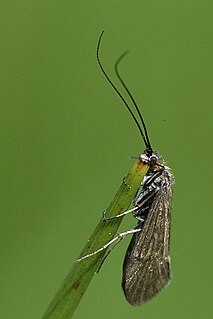 W
WThe Hydropsychoidea are a superfamily of caddisflies.
 W
WLeptoceroidea is a superfamily of caddisflies.
 W
WLibelluloidea is a superfamily of dragonflies.
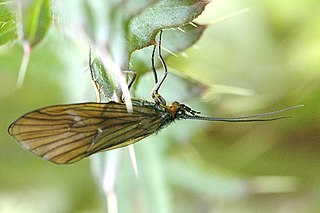 W
WLimnephiloidea is a superfamily of Trichoptera, the caddisflies. Please see the taxonomy details on the right of this page for further details.
 W
WPhryganeoidea is a giant caddisfly superfamily that may be paraphyletic with Limnephiloidea.
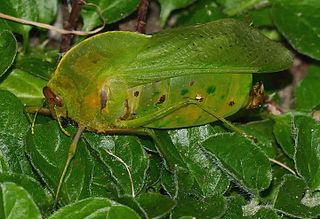 W
WThe Pneumoridae are a family of nocturnal short-horned grasshoppers in the order Orthoptera, commonly known as the bladder grasshoppers and the sole representative of the superfamily Pneumoroidea. Their centre of diversity is in southern Africa, but one species occurs as far north as South Sudan. Most adult males acquire an inflated abdomen, a specialization for amplified sound production, which is likely its primary function. Most genera display striking sexual dimorphism, and several species exhibit a dual male phenotype.
 W
WPyrgomorphidae is a family of grasshoppers in the order Orthoptera; it is the only family in the superfamily Pyrgomorphoidea, with a pan-tropical distribution. Their name is probably derived from pyrgos meaning "tower": a reference to the form (morph) of the head in the type genus Pyrgomorpha and other genera.
 W
WThe orthopteran family Rhaphidophoridae of the suborder Ensifera has a worldwide distribution. Common names for these insects include the cave wētā, cave crickets, camelback crickets, camel crickets, spider crickets and sand treaders. Those occurring in New Zealand, Australia, and Tasmania are typically referred to as jumping or cave wētā. Most are found in forest environments or within caves, animal burrows, cellars, under stones, or in wood or similar environments. All species are flightless and nocturnal, usually with long antennae and legs. More than 1100 species of Rhaphidophoridae are described.
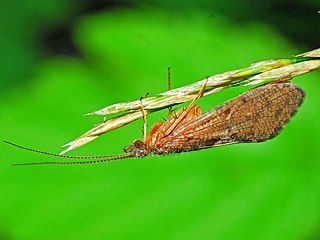 W
WThe Rhyacophiloidea are a superfamily in the insect order Trichoptera.
 W
WSericostomatoidea is a superfamily in the order Trichoptera, the caddisflies.
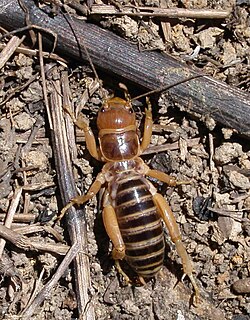 W
WStenopelmatoidea is a superfamily of insects in the order Orthoptera; in some older classifications this group was referred to as Gryllacridoidea.
 W
WTetrigidae is an ancient family in the order Orthoptera, which also includes similar families such as crickets, grasshoppers, and their allies. Species within the Tetrigidae are variously called groundhoppers, pygmy grasshoppers, pygmy devils or "grouse locusts".
 W
WInsects in the family Tettigoniidae are commonly called katydids, or bush crickets. They have previously been known as "long-horned grasshoppers". More than 6,400 species are known. Part of the suborder Ensifera, the Tettigoniidae are the only extant (living) family in the superfamily Tettigonioidea.
 W
WTridactyloidea is a superfamily in the order Orthoptera. The insects are sometimes known as pygmy mole crickets but they are Caelifera and not members of the mole cricket suborder Ensifera, unlike the true mole crickets, the Gryllotalpidae. It is composed of three families that contain a total of about 50 species. Insects in this superfamily can be 4 to 9 millimeters in length and generally have short antennae and long wings. They live along the banks of bodies of water in tropical areas and are good swimmers and jumpers. Fossils of this subfamily have been found in Siberian deposits dating back to the Cretaceous.
 W
WThe Trigonopterygoidea are an insect superfamily in the Orthoptera: Caelifera. Sometimes described as leaf grasshoppers, American species in the Xyronotidae have also been called razor-backed bush-hoppers.